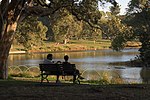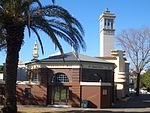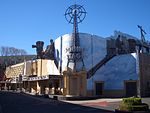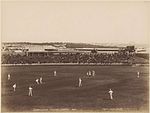Centennial Parklands

Centennial Parklands is the name given to a group of three urban parklands located in the eastern suburbs of Sydney, New South Wales, Australia. Comprising approximately 360 hectares (890 acres), the lands encompass Centennial Park, Moore Park and Queens Park. The Parklands are listed on the New South Wales Heritage Register, with various components of national, state or local heritage significance. The parks are contained within the local government areas of City of Randwick, Waverley Municipal Council, and City of Sydney.The parklands are managed by the Centennial Park and Moore Park Trust, trading as the Botanic Gardens and Centennial Parklands. The Trust is administered by the NSW Office of Environment and Heritage, an agency of the Government of New South Wales. The Parklands were added to the New South Wales State Heritage Register on 27 March 2000.Centennial Park is home to a number of wild animals including bird life, rabbits, and foxes. It is also home to a number of equestrian schools and other domestic animal endeavours such as the Centennial Park Rabbit Retreat, a boarding facility for rabbits in the centennial park and Paddington area.
Excerpt from the Wikipedia article Centennial Parklands (License: CC BY-SA 3.0, Authors, Images).Centennial Parklands
Grand Drive, Sydney Centennial Square
Geographical coordinates (GPS) Address Nearby Places Show on map
Geographical coordinates (GPS)
| Latitude | Longitude |
|---|---|
| N -33.899 ° | E 151.232 ° |
Address
Grand Drive
Grand Drive
2021 Sydney, Centennial Square
New South Wales, Australia
Open on Google Maps










